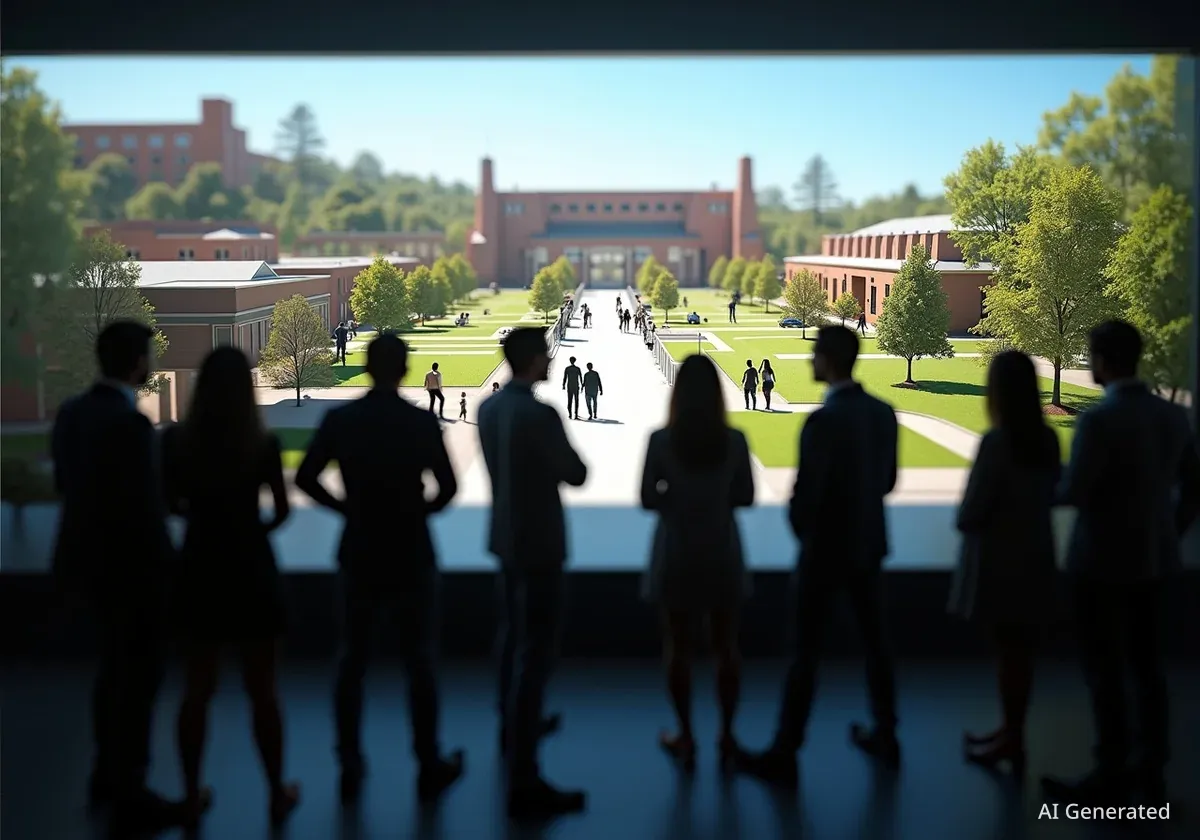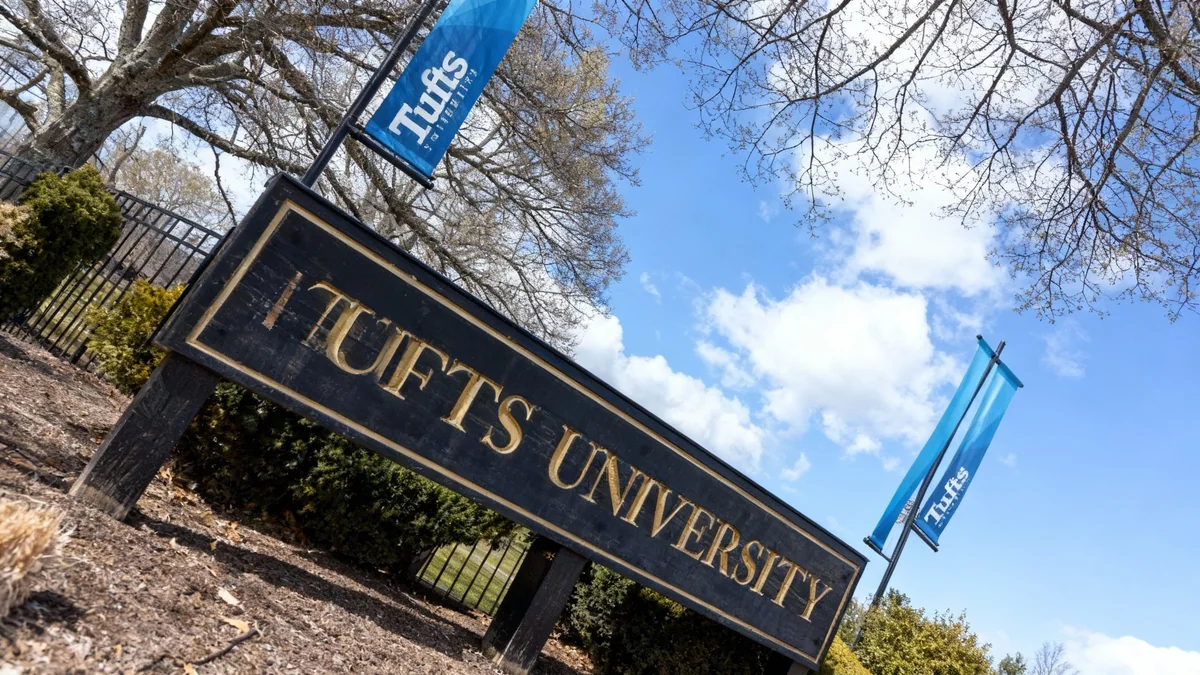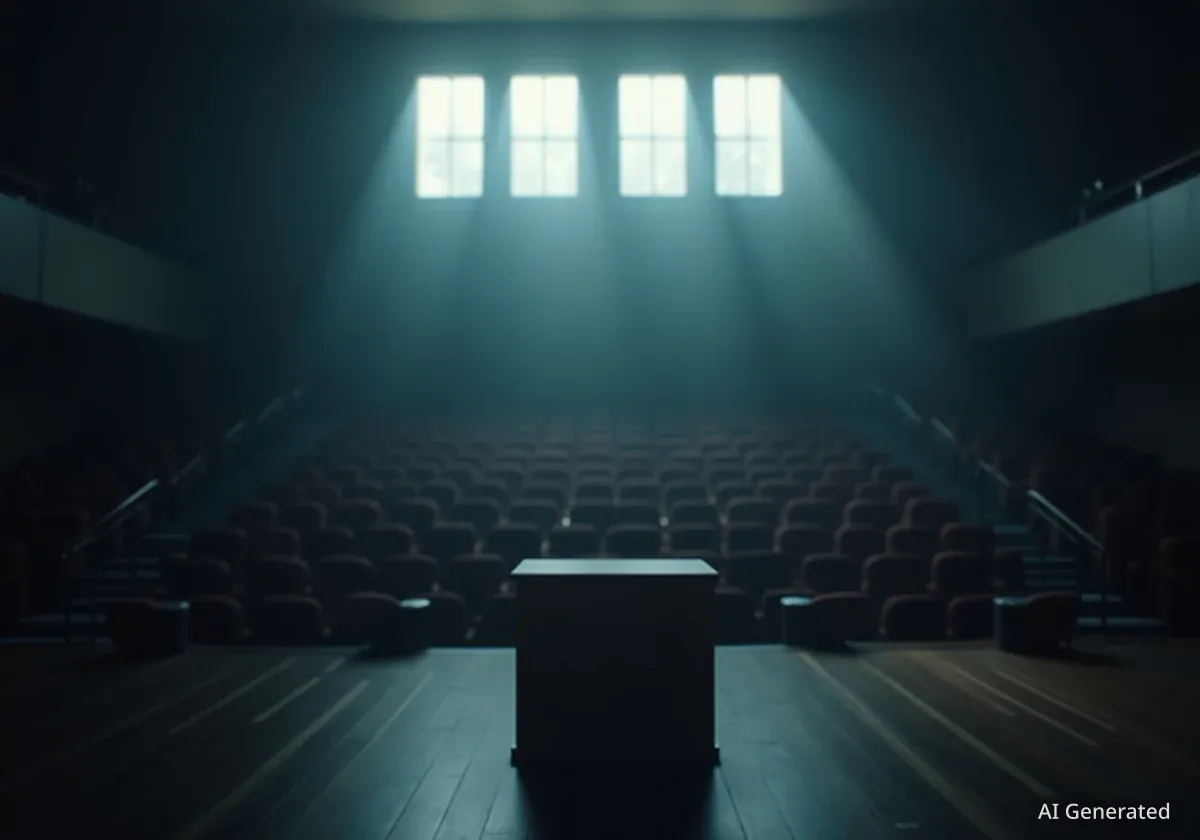Rice University has announced a major $120 million development initiative named the Gateway Project, designed to reshape the west side of its campus. The project will create a new pedestrian corridor connecting the university directly to the popular Rice Village shopping district and includes a comprehensive renovation of the historic Rice Stadium.
The university confirmed the plans on Thursday, November 6, describing the venture as a transformative effort to unify the campus with the surrounding Houston community while modernizing its athletic facilities. All construction will take place on university-owned land.
Key Takeaways
- Rice University is investing $120 million in the Gateway Project.
- A new pedestrian-friendly street will extend Amherst Street, directly linking the campus to Rice Village.
- Rice Stadium's capacity will be reduced from 47,000 to 30,000 as part of a major modernization.
- The project includes new premium seating, a 360-degree concourse, and multi-use event spaces in the stadium.
- Construction is expected to be completed by 2028.
A New Bridge Between Town and Gown
The core of the Gateway Project is a plan to physically and aesthetically merge the university campus with Rice Village, one of Houston's most frequented shopping and dining areas. This will be achieved by creating a new, pedestrian-focused corridor.
The plan involves extending Amherst Street two blocks eastward from Morningside Drive, creating a direct, walkable path to a new campus entrance near Greenbriar Drive. This new thoroughfare is envisioned as a tree-lined street designed to encourage foot traffic and community interaction.
University officials state that the project will activate currently underused outdoor spaces along this new corridor. Infrastructure improvements, including new water, sewage, and drainage lines, are also part of the plan to attract future development such as retail stores, restaurants, and residential housing.
"This is a generational investment in the growth and vitality of Rice University," said Robert T. Ladd, chairman of the Rice Board of Trustees. "By physically linking our university to one of Houston’s most dynamic neighborhoods and modernizing a cornerstone of our athletics district, we are honoring Rice’s legacy while paving the way for future growth, connectivity and impact."
Fostering Community Engagement
A key feature of the new connection will be a public greenspace intended to host community events, performances, and gatherings. This aims to strengthen the relationship between the university and the broader Houston community.
Rice President Reginald DesRoches emphasized the importance of this connection. "Rice Village has long been a beloved destination and part of the Rice community," he said. "By connecting our campus directly to the Village, we are strengthening our ties to Houston while enriching the student experience, advancing our growth and reinforcing Rice’s commitment to innovation and community."
Rice's Footprint in the Village
The university is a significant landowner in the area. The Rice Real Estate Co., which is affiliated with the university, owns approximately 260,000 square feet of building space in Rice Village. According to company data, 97 percent of this space is currently leased to a mix of national brands and local businesses.
Reimagining a Houston Landmark
The second major component of the Gateway Project is the extensive renovation of the 75-year-old Rice Stadium. The venue, which has hosted historic events like a speech by President John F. Kennedy and Super Bowl VIII, will be transformed into what the university calls a "stadium in a park."
The renovation focuses on creating a more modern, fan-centric experience while also improving flexibility for hosting a wider range of events beyond football. The project is being led by the architecture firm Populous, known for its work on major sports venues globally.
Stadium by the Numbers
- Original Capacity: 47,000 seats
- New Capacity: 30,000 seats
- New Event Space: Can host over 600 guests for seated events
- Private Suites: 14 new suites will be built on the second level
A Modern Fan Experience
One of the most significant changes will be the reduction of the stadium's seating capacity from 47,000 to 30,000. University officials noted that this change aligns with current trends for collegiate stadiums and will create a more intimate and engaging atmosphere for fans.
The renovation plan includes the demolition of the existing press box and the entire upper bowl. In their place, a new three-level west concourse building will be constructed. This structure will feature new premium seating options, including:
- Chairback seats
- Loge boxes
- Living room-style box seating
A large shade canopy will extend from the top of the new concourse over a portion of the lower bowl seats, providing comfort for spectators and improving energy efficiency. Fans can also expect improved sightlines throughout the stadium, larger restrooms, and upgraded concessions with an on-site kitchen for food preparation.
A new 360-degree concourse will allow attendees to move freely around the entire stadium, a feature common in modern venue design.
Multi-Purpose Functionality and Future Growth
The redesigned stadium is being built with versatility in mind. The new premium club level is designed to be converted into flexible conference and banquet space. This area will accommodate over 600 guests for seated events and more than 1,000 attendees on game days.
The second level will house 14 private suites, while the third level will contain new facilities for media, broadcasting, and game operations. This level will also include dedicated suites for the university and the athletics department. An outdoor patio on the suite level will provide additional space for private functions and alumni gatherings.
The project's initial phase will involve demolishing the Greenbriar Annex building to clear the way for the new corridor. The entire Gateway Project, including the stadium and community linkage, is guided by the university's 30-year Campus Land Use Plan and is scheduled for completion through 2028.





